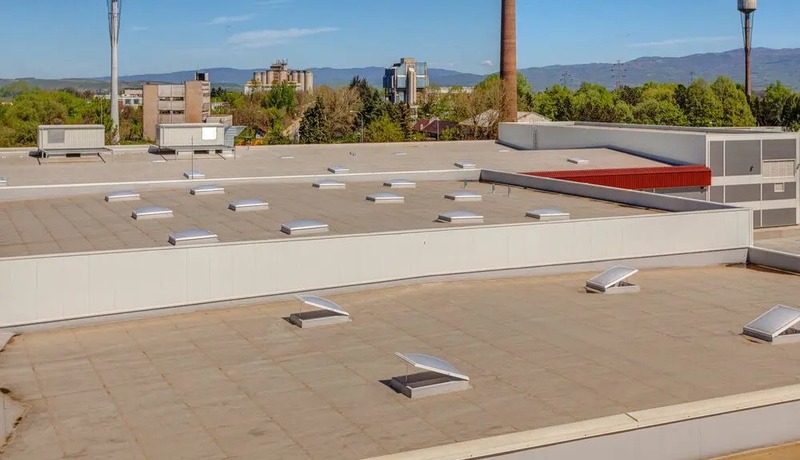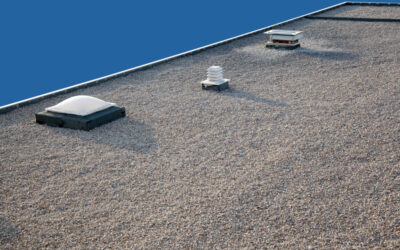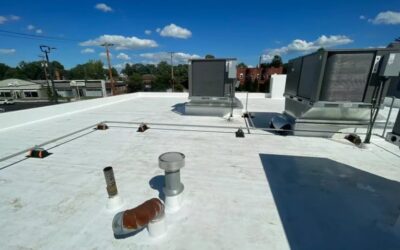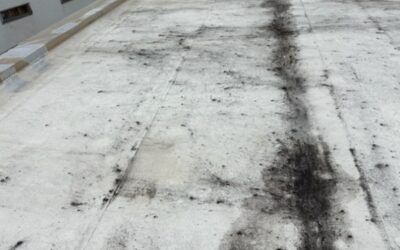Commercial roofs in Philadelphia face tough conditions year-round—from snow and ice in winter to heat and storms in summer. Over time, these elements take a toll, leading to leaks, energy inefficiencies, and costly repairs. Understanding the common issues with commercial roofs and learning how roof coatings can help commercial roof problems is key to protecting your property and your bottom line.
At Industrial Roofing Contractors, we’ve seen firsthand how unpredictable weather and poor maintenance can shorten the life of a commercial roof. In this blog, we’ll explore the most common roofing issues in Philadelphia, how they develop, and why roof coatings are one of the best solutions for preventing and solving these problems.
Top Weather and Wear Challenges for Philadelphia Roofs
Philadelphia’s climate is a big reason why so many commercial buildings experience recurring roof problems. Key environmental stressors include:
- Freeze-thaw cycles in winter
- Heavy rainfall and snow
- Humidity and heat in summer
- Strong winds and storms
These conditions put constant pressure on flat and low-slope roofing systems, increasing the risk of deterioration.
Common Issues with Commercial Roofs
Understanding the most frequent problems allows building owners to act fast and avoid expensive repairs. Let’s take a closer look at the common issues with commercial roofs in Philadelphia.
1. Ponding Water on Flat Roofs
Flat and low-slope roofs are prone to water accumulation, especially after heavy rain or snowmelt. If water remains on the roof longer than 48 hours, it’s known as ponding water—a leading cause of membrane deterioration.
Long-term ponding can:
- Weaken roofing materials
- Lead to leaks and water intrusion
- Create structural damage over time
2. Cracks and Membrane Splits
Temperature fluctuations can cause roofing materials to expand and contract, leading to cracks or membrane splits. These vulnerabilities often go unnoticed until leaks begin to appear inside the building.
Cracks in roofing membranes are often a sign that the roof is nearing the end of its lifespan, or that maintenance has been deferred for too long.
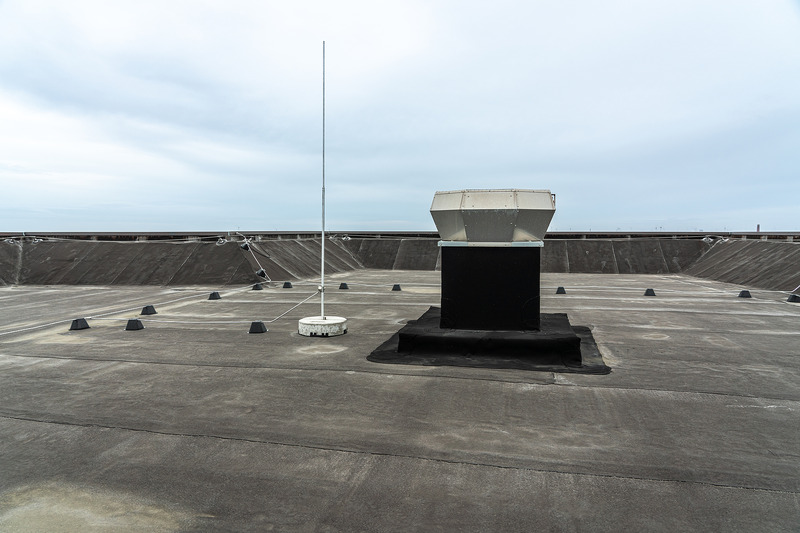
3. Blistering and Bubbling
Trapped air or moisture beneath the roofing membrane can cause blisters and bubbles. These defects compromise the integrity of the roof and may worsen under UV exposure or temperature extremes.
Blistering is particularly common in older built-up roofing (BUR) and some single-ply systems.
4. Flashing Failures
Roof flashings are installed at joints and edges to prevent water from entering through vulnerable points. Over time, flashing can crack, separate, or corrode—especially in older systems—resulting in leaks around HVAC units, chimneys, or roof edges.
5. UV Damage and Surface Erosion
Constant exposure to sunlight gradually breaks down roofing materials. UV rays dry out membranes, cause fading, and can weaken adhesives. This can reduce the overall reflectivity of your roof, increasing interior temperatures and energy bills.
The U.S. Department of Energy notes that reflective coatings can reduce roof surface temperatures by up to 50°F. (Energy.gov)
6. Mold, Algae, and Organic Growth
Philadelphia’s humidity can contribute to mold and algae growth on roofing systems. These organisms thrive in areas with poor drainage and can shorten the lifespan of your roof if left untreated.
They also add weight to the roof and may create a slippery surface that’s hazardous for maintenance crews.
7. Seam Failures in Single-Ply Roofs
Roofs with TPO, EPDM, or PVC membranes are often installed in sheets with seams welded or glued together. Over time, these seams can pull apart or degrade, allowing water to enter.
Improper installation and prolonged exposure to wind or standing water can accelerate seam failure.
How Roof Coatings Can Help Commercial Roof Problems
Now that we’ve outlined the common issues with commercial roofs, let’s talk about solutions—and this is where roof coatings shine. Understanding how roof coatings can help commercial roof problems is key to getting more life out of your roof and avoiding full replacement.
1. Creates a Seamless, Waterproof Barrier
Roof coatings are applied as a liquid, forming a seamless membrane that covers cracks, blisters, and seams. This effectively stops leaks and prevents water from penetrating the surface.
Especially helpful for ponding water, silicone coatings are often the go-to solution for flat roofs in Philadelphia.
2. Extends the Life of Your Roof
Instead of tearing off and replacing your entire roofing system, a properly applied coating can add 10 to 20 years of life to your current roof. This makes coatings a cost-effective alternative to full replacement.
The National Roofing Contractors Association (NRCA) promotes coatings as a way to delay replacement and extend the service life of commercial roofs. (NRCA.org)
3. Improves Energy Efficiency
Reflective roof coatings reduce heat absorption, keeping buildings cooler in summer and lowering energy consumption. Acrylic and silicone coatings are especially effective at reflecting UV rays and reducing rooftop temperatures.

This can lead to a noticeable reduction in your cooling costs—something every Philadelphia business can benefit from during hot, humid months.
4. Reinforces and Protects the Roof Surface
Roof coatings form a durable outer layer that shields your existing roof from UV radiation, hail, and chemical exposure. Some polyurethane coatings also provide resistance to impact and foot traffic—ideal for roofs with regular equipment maintenance.
5. Fights Mold, Mildew, and Algae
Certain roof coatings have antimicrobial properties that help resist the growth of mold, mildew, and algae. Keeping the roof dry and clean prevents organic buildup, improving both performance and aesthetics.
6. Seals Flashings and Penetrations
During application, roof coatings are applied to vulnerable areas like flashings, edges, and penetrations. This creates a watertight seal in places where leaks are most likely to occur—an especially important benefit for older buildings in Philadelphia.
7. Reduces Maintenance Needs
With a coating in place, your roof is less likely to suffer damage from weather and UV exposure. That means fewer repair calls, less downtime, and more predictable maintenance budgets.
Which Coating is Right for Your Roof?
If you’re considering a roof coating, it’s important to match the right product to your building’s needs. Below are the most common coating types used in Philadelphia:
| Coating Type | Best For | Lifespan | Reflectivity |
| Silicone | Ponding water, extreme weather | 20+ years | Moderate |
| Acrylic | UV protection, energy savings | 10–15 years | High |
| Polyurethane | Foot traffic, durability | 15–20 years | Moderate |
| Asphalt Emulsion | Budget-friendly restoration | 10–12 years | Low |
Your choice will depend on factors like:
- Roof slope and drainage
- Weather exposure
- Age and condition of the existing roof
- Energy efficiency goals
Why Philadelphia Businesses Trust Roof Coatings
In a city with unpredictable weather, high humidity, and densely packed buildings, roof coatings offer reliable protection with less disruption. Whether you’re managing an office, warehouse, retail space, or industrial facility, coatings can address the most common issues with commercial roofs—without breaking your budget.
At Industrial Roofing Contractors, we’ve helped businesses across Philadelphia apply the right coating to restore their roof and avoid premature replacement. Our expert team evaluates your roof’s current condition and recommends the best coating based on your unique needs.
Let’s Take the First Step Toward a Stronger Roof
If you’re noticing signs of damage, leaks, or rising energy bills, now is the time to act. At Industrial Roofing Contractors, we make it easy to evaluate your options and restore your roof with the right protective coating.
Get a free estimate now and let us help you protect your building, reduce your maintenance costs, and extend the life of your commercial roof.


